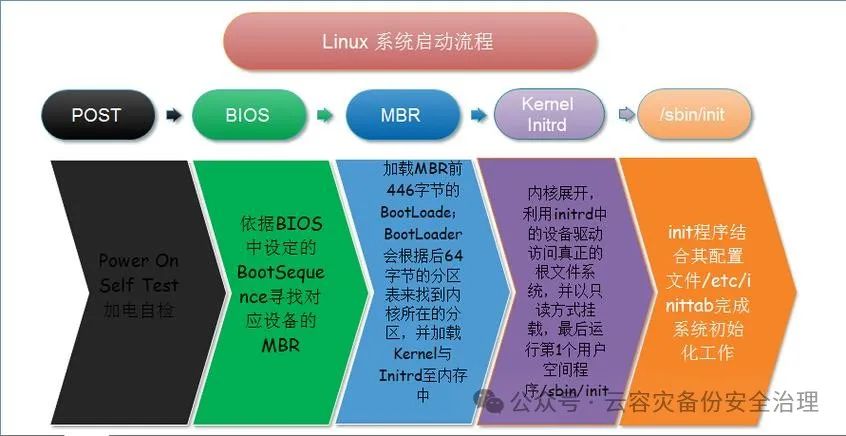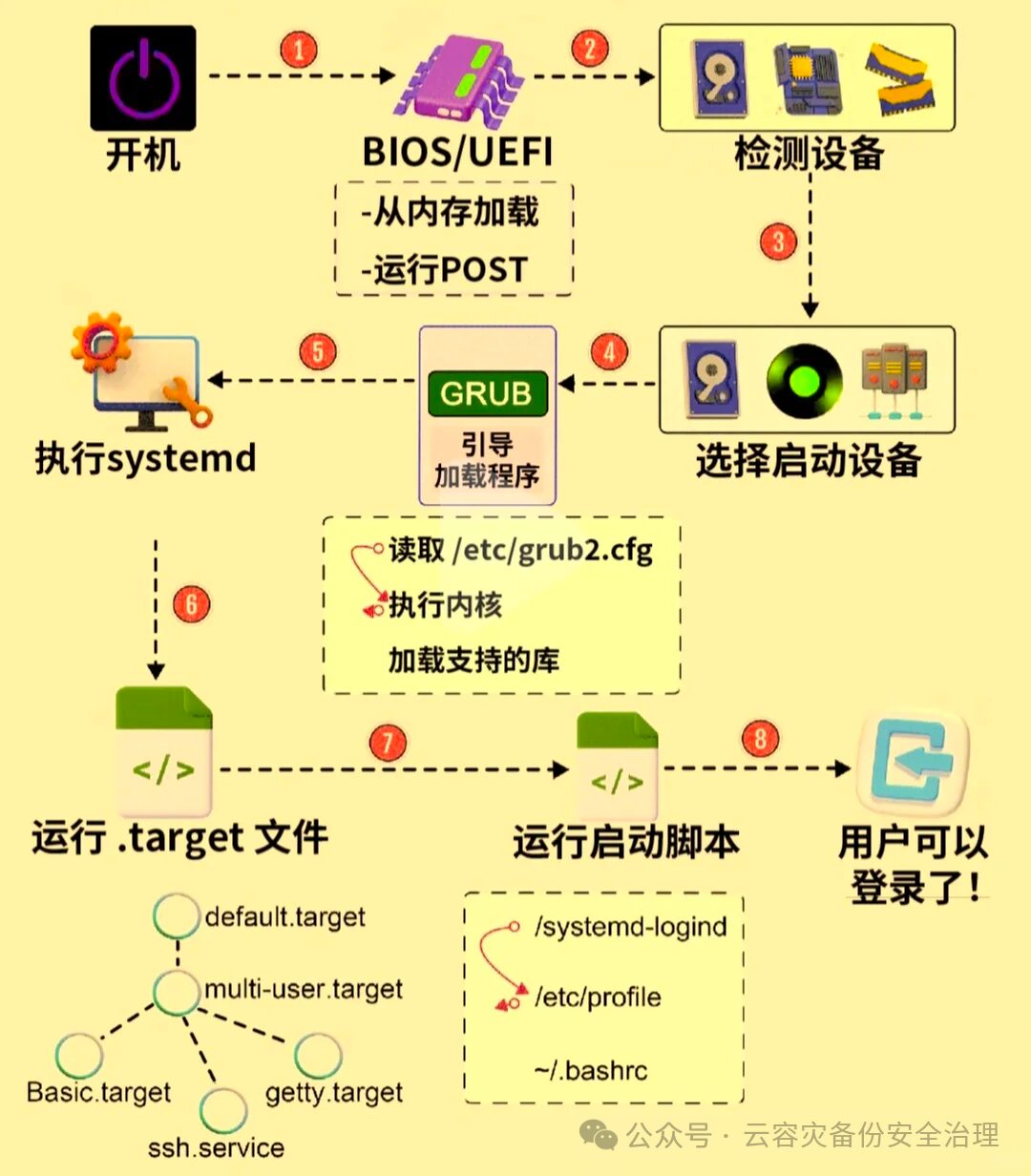Skip to content
💻 A Detailed Guide to the Linux Boot Process
✨ Today, let’s take a detailed look at the Linux boot process, which is an important foundational knowledge for using the Linux system! 💕
1. Booting The beginning of everything is, of course, booting. When we press the power button, the entire startup process officially begins. It’s like opening a door to the digital world.
🖥️ 2. BIOS/UEFI Next comes the BIOS (Basic Input/Output System) or UEFI (Unified Extensible Firmware Interface). The BIOS/UEFI loads from memory and runs POST (Power-On Self-Test). This process mainly checks whether the hardware is functioning properly, just like checking if you have your keys before leaving home.
🔍 3. Device Detection The BIOS/UEFI checks various devices connected to the computer, such as hard drives, keyboards, and mice. This step ensures that the system can recognize all necessary hardware, laying the foundation for subsequent boot operations.
🧐 4. GRUB Then comes GRUB (GRand Unified Bootloader). GRUB plays a crucial role; it reads the /etc/grub2.cfg file, which contains the configuration related to system boot. GRUB acts like a conductor, deciding the direction of the next steps.
🎶 5. Executing systemd After the GRUB bootloader, systemd is executed. systemd loads the supported libraries and executes the kernel. This step is like injecting a soul into the system, allowing it to start functioning.
💪 6. Selecting Boot Device At this step, we need to choose from which device to boot the system. This is particularly important when there are multiple hard drives or other bootable devices; we can choose the appropriate boot device according to our needs.
🖱️ 7. Running .target files The boot process continues with the execution of .target files, such as default.target and multi-user.target. These files specify the configurations for different run levels of the system, determining whether the system starts in single-user mode or multi-user mode.
📄 8. Running Startup Scripts Next, startup scripts will be executed, such as /systend-logind, /etc/profile, ~/.bashrc, etc. These scripts set up the user environment, loading various configurations to prepare for user login.
🛠️ 9. User Can Log In! Finally, when everything is ready, the user can log into the system. We can then navigate through the Linux system and perform various operations.
🎉 In summary, the Linux boot process is a tightly interconnected and precise procedure. Each step serves its purpose, ensuring that we can smoothly enter and use the Linux system. Understanding this process greatly helps us in learning and using the Linux system more deeply.





